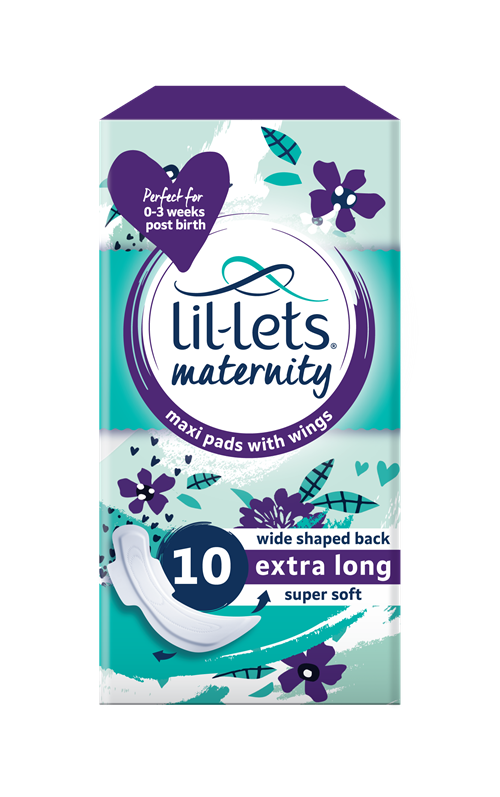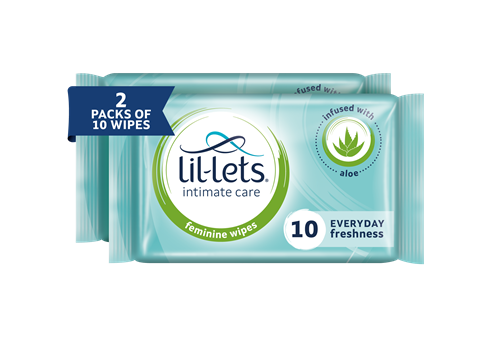Let's talk about postpartum bleeding and how to manage looking after your postpartum body.
All women experience postpartum bleeding after giving birth, even if they have had a C-Section, and sometimes it lasts several months. We’re here to uncover not only how to manage postpartum blood loss, but also the recovery process better.

It is a sign that your body is healing and shedding the uterine lining that supported your pregnancy.
Before we explore tips for managing postpartum bleeding, it may help you to understand why we experience it and what is happening to your body following birth down there!
Lochia is your body’s way of shedding the uterine wall. The discharge itself consists of the blood, cells, mucus and retained placenta tissue from the uterus and it's a completely natural process, which may last for up to six-eight weeks postpartum.
Postpartum bleeding or Lochia, is perfectly normal and you will experience this regardless of how you gave birth. It's like a period, but will differ in colour and how much blood (Lochia) is released. So it’s quite normal to find it’s heavy for the first few days, quite bright red in colour, becoming brown or even creamy yellow in the last few weeks. You may even notice a few small clots on your pads, or falling into the toilet basin, don’t be alarmed this is typically fine too.
Physically, your uterus may feel a little uncomfortable as it contracts back to its pre-pregnancy size, and if you’ve had a vaginal birth, you may feel very tender, especially if you had sutures of tore during childbirth. If you had a caesarean (c-section), even though you will be encouraged to get up and move around, this can still be difficult and discomfort or tightening is often felt at the point of incision.
And if you’re wondering if your body will ever be the same, yes it will! Or at least fairly close to your pre-pregnancy state, with any swelling receding after a few weeks, and your vagina regaining much of its muscle tone and size. By around week 6 post-birth, your uterus will also be back to its normal size.
There are three categories of lochia and whilst this will vary for everyone here’s what to expect.
Blood and shreds of foetal membranes flow out of the uterus. The fluid is generally quite red and may last for between 3-5 days following birth. You’ll probably change your maternity pads quite often.
The lochia has thinned out and turned brownish or pink in colour. Made up of predominantly red blood cells, cervical mucus and microorganisms, you’ll see it for around 5-10 days following birth.
Whitish or creamy-yellow in colour, it typically lasts from 2-6 weeks after delivery. It contains fewer red blood cells and more white blood cells, tissue, mucus and again, microorganisms.
While it's a completely natural process, postpartum bleeding can be heavy and you may still be feeling uncomfortable. So it’s important to manage it properly to avoid any discomfort or infections. Here are some tips on how to manage postpartum bleeding.

our regular pads may not be enough to absorb this type of initial heavy flow, so it's important to use maternity pads. These pads are designed to be thicker and more absorbent to cope with Lochia release. Lil-Lets Maternity pads are specifically designed to be used immediately after giving birth. They are super soft, comfortable and provide extra protection when your flow is heavy and you may be resting and feeling a little tender.
And then as your flow starts to diminish (weeks 3-4), and you start to get back to a more normal routine and increase activity, you will most likely prefer a slimmer pad that will still keep you protected and secure, this is where our Lil-Lets Ultra Thin pads come in handy.
SmartFit™ Maternity Maxi Pads With Wings SmartFit™ Ultra Thin Pads — SuperChange your pad frequently, at least every 3-4 hours, to avoid any odours. If you notice any unusual smells or discharge, speak to your healthcare provider.
To keep your intimate area clean, you can use intimate care wipes, formulated for soothing and hygienic postpartum care. Be sure to carry them in your handbag and use them when needed. They’re a great item to have on the go. We also recommend packing some wipes in your maternity hospital bag.
SmartFit™ Lil-Lets Intimate Care Aloe Wipes SmartFit™ Lil-Lets Intimate Care Chamomile Wipes
As we’ve said postpartum bleeding is a perfectly natural part of your recovery, but there are things to look out for that may be a sign all is not well:
When it comes to postpartum bleeding, many people seek natural remedies to complement their healing process. While it's important to consult with your healthcare provider before trying any new remedies, here are some of our suggestions to try at home.
Postpartum recovery is a journey, and rest plays a crucial role in healing and managing postpartum bleeding. Listen to your body and prioritise self-care by getting ample rest and sleep. Avoid strenuous activities or lifting heavy objects, as this can put unnecessary strain on your body and potentially worsen the bleeding.
Eating a well-balanced diet rich in nutrients can support your body's healing process and help manage postpartum bleeding. Include foods rich in iron, such as leafy greens, lean meats, and legumes, to replenish iron stores depleted during childbirth. Additionally, staying hydrated is essential for optimal recovery.
Engaging in gentle exercises, as advised by your healthcare provider, can help improve blood circulation, strengthen your pelvic floor muscles, and promote healing. Start with low-impact activities like walking or postpartum-specific exercises to gradually regain strength and support your overall recovery.
It's super important to manage postpartum bleeding properly to avoid discomfort or infections.
It’s recommended that you don't use tampons in the weeks after childbirth. Wait until after your 6 week postpartum check and for your postpartum menstrual period to start again.
Lochia is perfectly normal, but if you bleed for longer than usual, pass a lot of blood clots or you aren’t feeling well, don’t hesitate to consult your gynaecologist or nurse.
Nobody can ever fully prepare you for how messy birth and its aftermath can b, but knowing that you’ll have postpartum bleeding is an important part of preparing for your life post-birth.

Join our community at Lil-Lets talk, the place to go if you’ve got questions on pregnancy, periods or absolutely anything else!
Lil-Lets Talk
Postpartum bleeding typically stops 6 weeks after giving birth. However, it varies for each individual. Consult with your healthcare provider if you have any concerns about the duration or intensity of postpartum bleeding.
Postpartum bleeding, also known as lochia, can last around 4 to 6 weeks after giving birth. However, it's important to note that the duration may vary for each individual, and it's normal to experience light spotting or intermittent bleeding during this time.
It is normal and common for postpartum bleeding to stop and start intermittently. The flow may decrease and then increase again, or there may be periods of no bleeding followed by episodes of bleeding. This pattern is usually a part of the normal healing process.
Sometimes postpartum bleeding is heavier when you breastfeed. When breastfeeding, the uterus is more likely to contract due to the build-up of hormones in your body. This is a common cause of more bleeding and cramps.
You cannot necessarily prevent postpartum haemorrhage, but there are ways to reduce the risk factors. Make sure you are getting adequate prenatal care, maintaining a healthy lifestyle during pregnancy and attending regular check-ups with your healthcare provider.